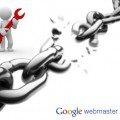How are Web Owners Coping with the Introduction of Panda and Penguin?
There was a time when some webmasters result to shady methods to get a good placement in Google. They employed black hat search engine optimization (SEO) techniques such as keyword stuffing, invisible text, and doorway pages to get great rankings in results pages.
It would have been better if those who manipulated the results provided something of value. Sadly, that was not the case. Instead of getting highly relevant content, users were provided with info that had no substance whatsoever.
The Solution
The search engine giant put a stop to all of these by releasing an algorithm called Panda in February 2011. This particular update targeted sites that were producing low-quality content. Constant refreshes were also made throughout the year, which saw the rankings of some websites slip from their original positions.
Google continued its tirade against many sites that did not provide any value for the whole of 2012. In fact, the last update happened before the year ended. The company didn’t even stop there, as they greeted 2013 with the 24th version of the ranking algorithm which affected 1.2% of English-language searches.
As if Panda wasn’t enough to send several site owners reeling, Google released Penguin in April 2012. This particular algorithm looked into the link profile of a Web site. As expected, it caused some portals to experience a major drop in rankings.
The Aftermath
So far, there have been 24 updates to the Panda algorithm (the latest of which was on 22 January) and three for Penguin (the last was released on 5 October 2012). The question is; “How have website owners coped with these algorithms since their introduction?”
A poll conducted by SEO Roundtable revealed that only 6% have fully recovered from the devastation brought about by Penguin.
On the other hand, a survey conducted on the same site showed that 68% of responders believed that it was impossible to recover from Panda fully.
Given these figures, it looks as if plenty of website owners are finding it hard to get back on their feet after the arrival of these updates. Although some claimed to have made a complete recovery.
Furthermore, if you do a quick Google search you would find a few success stories that detail how they managed to overcome the fury of these algorithms.
Having mentioned that, the questions remains; “Is there a chance to recover completely?”
The Road to Recovery
To answer that question, it is best to quote Matt Cutts (head of webspam at Google). In a Google+ Hangout session last year, he mentioned that “it is possible to recover a hundred percent from Panda.”
Since these updates are rolled out periodically, webmasters have time to make necessary changes to ensure that their site sticks to the rules laid out by Google. So what exactly needs to be done?
- Check your entire domain for posts that offer little to no value at all. Since this algorithm focuses on content, it pays to check if such articles exist on your portal. Once you have identified them, you can opt to repurpose them by filling them with fresh and informative material. In case you need further assistance with this matter, you can always acquire the services of a company that provides content marketing services.
- Share your write-ups through social media channels. This can be done for the new articles you have published or the ones you have repurposed. Speaking of the latter, it helps to give it new life. Meaning, there is a chance that Google would look kindly upon it since it may be gathering new signals through shares, retweets, likes, and +1’s.
- Create content that is engaging. Put simply, publish articles that several web visitors would want to read and even share. In short, these should be informative and timely. In addition, you can diversify what you provide by posting other forms of media, such as images, videos, and audio files.
- Remove duplicate content. Since Panda looks harshly upon this, it is best to take them off your site completely.
Now, let us move on to Penguin recovery. This update mostly concentrated on the link building strategies of a site. Basically, what this does is check your inbound links, so pay attention to this area.
What do you have to do?
- Check that you are getting backlinks from related websites. If you belong to the travel industry, then those who are linking to you should be from that niche as well.
- See if the links pointing back to you have diversified anchor texts. If all you are getting is exact-match links for money keywords, then you need to do something about it. Your site should have a good combination of the following: naked URLs (www.yourbrandname.com), brand anchors (Your Brand Name), brand-keyword anchors (Your Brand Name SEO Blog), and universal anchors (“click here”).
After you have identified all the unnatural links in your domain, it is best to get in touch with the site owners who have linked to you. In case that you do not get any response, it is time to use Google’s Disavow Links Tool.
Furthermore, it also helps to look into your internal linking mechanism. You have to make sure that they are also diverse and not stuffed with keywords.
In addition, you can also look into guest posting in a related niche. This is one of the best ways to get good backlinks. Of course, sharing your content through social media sites such as Facebook, Twitter, LinkedIn, and Google+ also helps.
Final thoughts
There is no doubt that the entire online community was rocked when Google rolled out its Panda and Penguin updates. Since then, measures have been put into place to recover from the onslaught of these ranking algorithms. Some have claimed full recovery, while some are still struggling.
Whatever the case may be, know that there are always strategies to employ to get a site back to where it once was. Although there is exact timeframe, as to when a website can fully recover, weeding out the problems straight away after experiencing a penalty is a good start.
How about you? Did you suffer a ranking setback when Google released their Panda and Penguin algorithms? What were the steps you took towards recovery? Have you managed to restore your original search engine placement? Share all your thoughts on this topic in the comments section!
Tags: google, search algorithm, search engine, seo, web development resources




















































